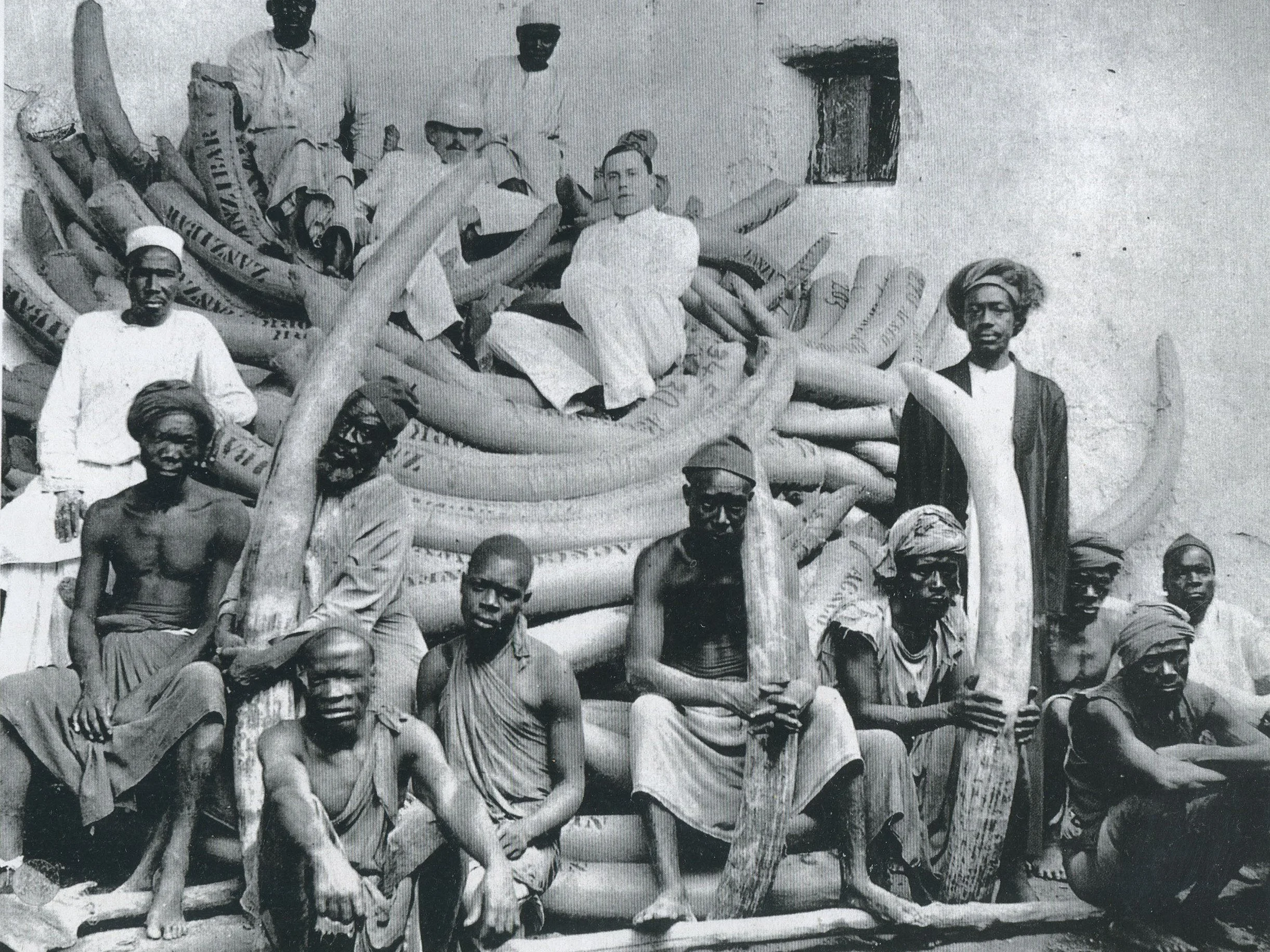Blinded By Violence, Guided By Greed
Heart of Darkness
Joseph Conrad’s 1899 novel Heart of Darkness takes place in the late nineteenth century in the Belgian-controlled Congo Free State. During this period the Congo was subject to horrific violence under European colonizers, forcing African people into slavery. The land of the Congo was plundered and pillaged as natural resources such as ivory were robbed and exported to expand trade. The Heart of Darkness is intimately narrated by Marlow, who shares his thoughts upon witnessing the horror of slavery, exposing the greed and cruelty of the Belgian company he works for. At the begging of the novel, Marlow is introduced as a young man who is eager to explore the world and establish himself. As he travels deeper into the heart of Africa, he becomes increasingly aware of the inhumane system of colonialism and is particularly critical of the dehumanizing effects on both the colonized and the colonizers.
(E.D. Moore, ivory buyer for Pratt, Read, reclines atop Zanzibar's largest shipment of tusks — 355 tusks weighing 22,000 pounds, circa 1890-1910")
Ivory, a white substance made from elephants' tusks, was once as valuable as gold. For Westerners “Ivory” represented economic freedom and social status, for Africans it symbolized violence and death. Marlow highlights the dehumanizing of both the elephant and the native Africans by the Europeans who view both as “objects of worship”. Marlow observes how the African slaves were exploited, traded, and murdered in the same way the elephants were slaughtered for their tusks. The colonizer’s pursuit of Ivory represents the violence influenced by greed in which both human beings and animals are exploited.
"The word 'ivory' rang in the air, was whispered, was sighed. You would think they were praying to it. A taint of imbecile rapacity blew through it all, like a whiff from some corpse. By Jove! I've never seen anything so unreal in my life. And outside, the silent wilderness surrounding this cleared speck on the earth struck me as something great and invincible, like evil or truth, waiting patiently for the passing away of this fantastic invasion." (Chapter 1)
Apocalypse Now
Apocalypse Now paints wartime American imperialism in Vietnam criticizing the West’s involvement that led to the death and destruction of innocent civilians. Coppola's adaptation illustrates the core themes and symbols of The Heart of Darkness focusing on the madness of violence and greed. Apocalypse Now highlights how little had changed in the decades since The Heart of Darkness was published, as the Americans and French were just as cruel and greedy as the Belgians in the Congo.
This scene highlights how the French viewed Vietnamese people as inferior. France’s occupation of Vietnam led to the systematic exploitation of natural resources such as rice, coal, and rubber for the chief purpose of benefiting the French. The economic progress made in Vietnam under the French during the 1900’s only assisted the French and the small class of wealthy Vietnamese, while the majority of the country was starved and deprived.
“It was just robbery with violence, aggravated murder on a great scale, and men going at it blind – as is very proper for those who tackle a darkness”(Conrad,10)
Francis Ford Coppola's Apocalypse Now and Joseph Conrad's Heart of Darkness share similar central themes: the exploitation of native territory, indigenous people, and natural resources. Both pieces explore the damaging effects of colonialism, as well as the moral and psychological toll it takes on those who participate in it. A major theme of "Heart of Darkness" is how European powers exploited the Congo and its people. Marlow, a main character, is dispatched to the Congo to smuggle ivory, a valuable resource at the time. He sees the brutality with which the white colonizers treat the local inhabitants who view them as inferior and primitive. The Congo River itself serves as a symbol of the devasting force of colonialism, and the outcome of western invaders exploiting the resources of the land and damaging its natural beauty. Similar to this, Apocalypse Now depicts the Vietnam War as a colonial conflict in which the United States attempts to impose its will on a foreign nation and its population. The eroding of the rubber trees and rainforests critiques the destructive nature of the war and the moral decay of the US soldiers, who are willing to destroy everything in their path.
The opening scene of the film starts with a long shot of a jungle landscape met with the shrill sound of helicopters and explosives. As the camera closes up, American soldiers are revealed cutting down a mass of trees and setting firing bombs. The destruction of the rainforest foreshadows the immense destruction and violence of the war and the imperial tendency to dominate and destroy native land. The American soldiers in this scene are portrayed as mindless, initiating violence and destruction without any sense of purpose. As they hack away at the rainforest with their chainsaws, they pave a trail of destruction, eliminating anything or anything that obstructs their path. The destruction of the rainforest symbolizes the major themes of the film, including the harsh realities of colonial war and the aftermath of violence on the colonizer and the colonized. The rainforest, with its lush vegetation and diverse ecosystem, represents the native land and its people in its purest and most peaceful nature. The destruction of the rainforest serves as a metaphor for how the West views the Vietnamese people as inferior, concluding that imperialism is utterly immoral.

